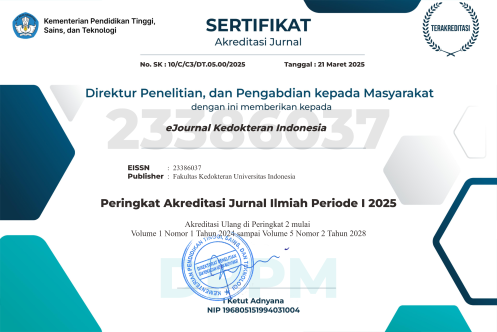Nasal and Sinus Diseases: Common Causes of Upper Airway Cough Syndrome
DOI:
https://doi.org/10.23886/ejki.9.33.243-8Keywords:
adenoid hypertrophy, allergic rhinitis, chronic cough, chronic rhinosinusitis, upper airway cough syndromeAbstract
Upper airway cough syndrome (UACS), previously known as post-nasal drip syndrome, is a persistent cough that lasts more than four weeks in children or more than eight weeks in adults, which is associated with nasal and sinus diseases, such as allergic rhinitis (AR), chronic rhinosinusitis (CRS), and adenoid hypertrophy (AH). UACS is one of the major causes of chronic cough. Several theories support the pathophysiology of chronic cough in UACS, namely post-nasal drip, airway inflammation, and sensory neural hypersensitivity theories. Persistent and excessive cough generates a deterioration in patient’s quality of life and social interaction. This review summarizes the knowledge on pathophysiology and underlying disease of UACS, aims to help clinicians identify and treat this syndrome.
Downloads
Downloads
Published
How to Cite
Issue
Section
License
Copyright (c) 2022 Niken Lestari Poerbonegoro, Nina Irawati, Sonia Miyajima Anjani

This work is licensed under a Creative Commons Attribution-NonCommercial 4.0 International License.



